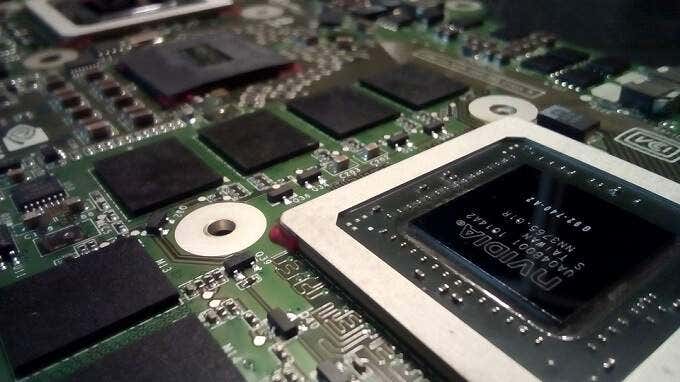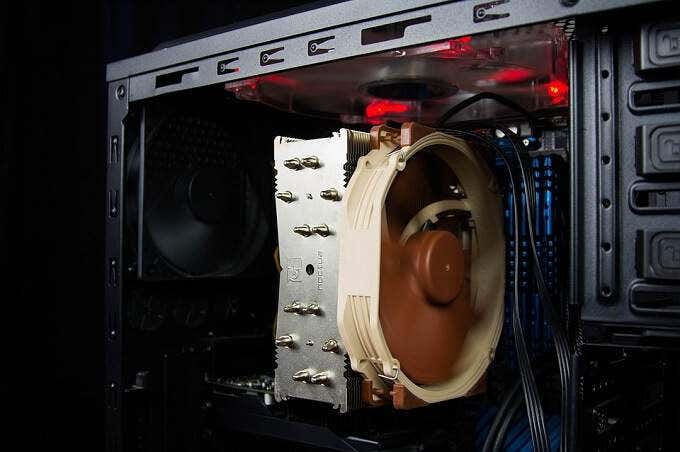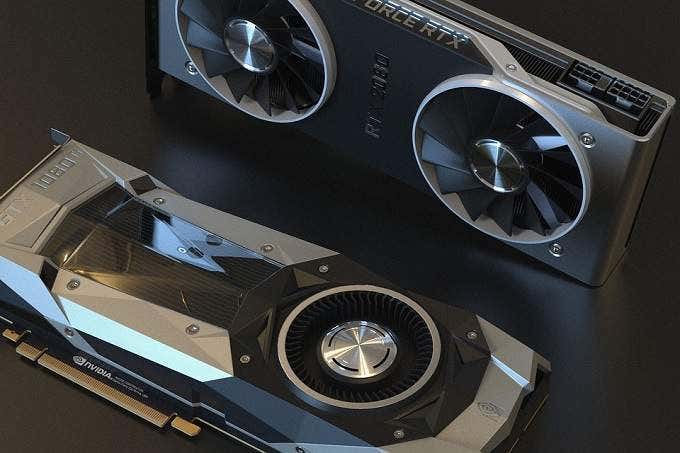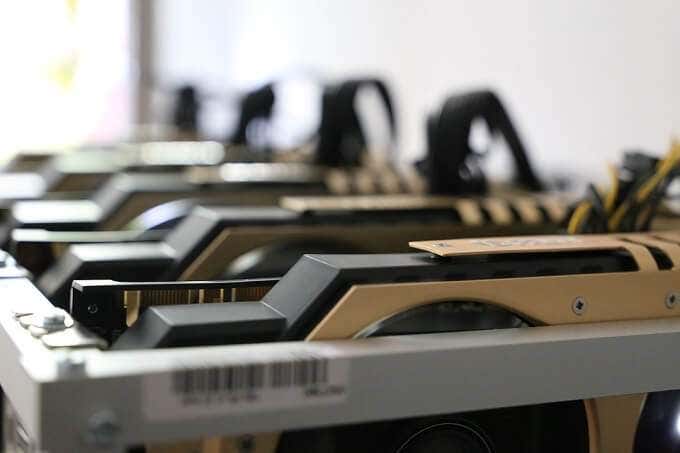Plus, how it is different from a CPU
The GPU or Graphical Processing Unit is a dedicated microchip that is designed to specifically do graphics-related tasks at a much faster rate than a CPU or Central Processing Unit.
In general, GPUs handle the visual side of video games as well as video editing software, graphic design, 3D design and other similar tools. Recently, GPUs have also been put to use doing certain non-graphics tasks like cryptocurrency mining, which works well with their unique internal design.

The Difference Between a GPU And CPU
Every computer, whether a laptop, tablet or gaming console, has a CPU. The CPU is the brain of the machine. When you run software on your device, it’s the CPU that follows the instructions and does all the necessary math. Of course, every microchip executes instructions, so what makes a CPU special?
Most modern CPUs have four CPU cores, although this number is rapidly growing. The number of calculations a CPU can do at the same time is limited by the number of cores. But a CPU is very good at doing a small number of complex calculations of any type, very quickly, one after the other.

However, modern GPUs have a very different design philosophy. Instead of a small number of complex, full-function processing cores, they have hundreds or thousands of simple processor cores that are designed to execute instructions in parallel, specifically related to graphics.
For example, an instruction to shade a pixel in the image a certain way. Modern computer displays have millions of pixels. To render and animate realistic 3D graphics at smooth frame rates demands this massive parallel-processing power. So if you want to process lots and lots of simple commands at the same time, you want a GPU.
Are GPUs And Graphics Cards The Same Thing?
It’s become common to use the terms “GPU” and “graphics card” interchangeably. Which leads to situations where someone will say that their computer doesn’t have a GPU, but what they really mean is that the computer doesn’t have a graphics card.

What is a GPU? The GPU refers specifically to the microprocessor itself, but of course a GPU can’t operate by itself. It needs other components to do its job. So let’s go over the different ways that GPUs are packaged.
Graphics Cards
A graphics card is a discrete device that plugs into a standard slot on your computer motherboard. It consists of the printed circuit board, the GPU, memory, display connectors, power connectors and other various components that the GPU needs.

Graphics cards also have dedicated cooling systems that help keep the GPU within a safe operating temperature. The main benefit of graphics cards is that they can be easily replaced with newer models without the need to replace the entire computer or motherboard.
Integrated GPUs
Integrated GPUs are built into the same housing as a CPU. So a computer equipped with one of these does not need a separate graphics card in order to work. Display connectors are provided by the motherboard and the GPU shares the same pool of memory as the CPU. Of course, the CPU and GPU also share the same cooling system and power supply.

Integrated GPUs are pretty powerful these days and some can even be used for modest video game graphics, but their main advantage is cost and space savings. Which is why they are a popular solution in many laptops.
Tablets and smartphones also have integrated GPUs, but these are part of a “system on a chip” package. On computers, only the CPU and GPU share the same package In the case of SoCs, the RAM, storage, peripheral controllers and other components that make up the entire system are all on the same silicon package.
Dedicated GPUs
A dedicated GPU is distinct from a graphics card and integrated GPUs. It’s easiest to think of it as a graphics card that has been built into the computer. Laptops are the main devices that use dedicated GPUs.
Just as with a graphics card, the GPU has its own memory and cooling, but unlike a graphics card you can’t change or upgrade your dedicated GPU. There are a small number of laptops that use interchangeable GPU modules, but this is a rare exception.
External Graphics Cards
A recent development, external graphics cards, make use of high-speed ports on modern computers. Thunderbolt 3 over USB C is the solution of choice. External cards can either be an integrated solution, or simply an enclosure which you can use with any graphics card that will fit.
This is a good solution for laptop users who want a more powerful GPU solution when at a desk. You can read more about external GPUs in our article about them.
Understanding GPU Specifications
If you want to know how to choose between different graphics cards, have a look at our graphics card buyer’s guide for a detailed explanation of GPU specifications. If you just want a quick rundown, here are the key numbers that matter when it comes to GPUs:
- The number of processors
- The amount of memory
- The total memory bandwidth
- Special features, such as hardware ray tracing
Unfortunately, knowing these numbers or details won’t tell you much about how a given GPU or graphics card will perform. In the end what matters most is performance with the applications you want to run, which you can easily find in published benchmarks online.
General GPU Computing Tasks
The last important thing to know about modern GPUs is that they can be used for certain non-graphics tasks. Since GPUs are essentially made up of a massive number of simple processors, any job that needs lots of calculations done in parallel may benefit from running on a GPU.

For example, the Nvidia brand of cards work with CUDA (Compute Unified Device Architecture) instructions. You can write software using CUDA so that it makes use of the GPU’s unique design to accelerate certain types of calculations.
There’s also OpenCL, which is not attached to a specific brand of card. GPUs are being applied to big data analysis, machine learning, deep learning, cryptocurrency mining, and an ever-growing list of advanced jobs that would have needed supercomputers in the past.
I Can See Clearly Now
These are the most important facts you need to know about what GPUs are. Now you know what they are, what they’re used for, and how they’re different from other types of processors. We should all be grateful for GPUs. Using computers would be much less colorful and friendly without them!







